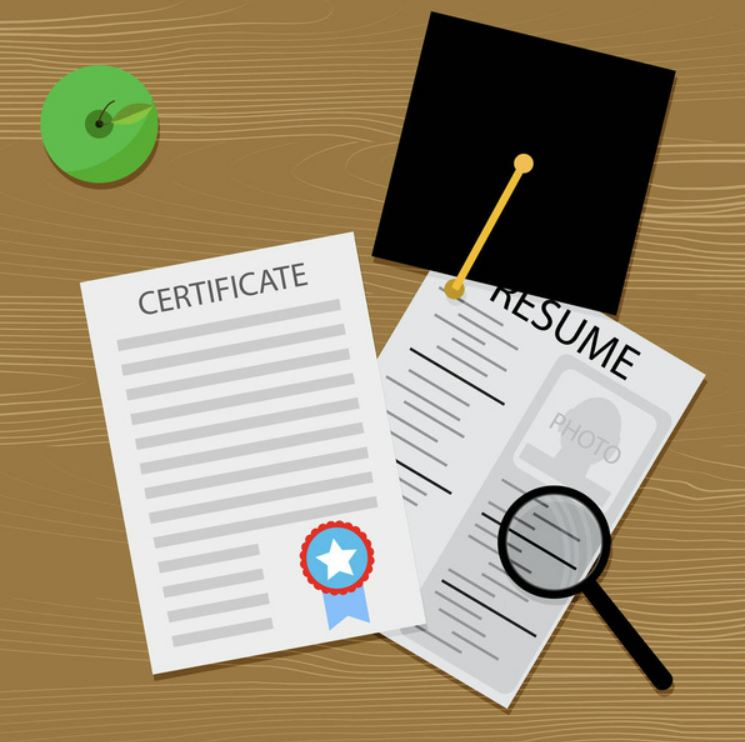In today’s competitive job market, showcasing your skills and qualifications effectively is crucial. One powerful way to stand out is by highlighting your certifications. Certifications demonstrate your expertise and commitment to your field, often giving you an edge over other candidates. But how do you list certifications on your resume to make the most impact? This comprehensive guide will walk you through everything you need to know about including certifications on your resume.

Why Certifications Matter
Certifications are formal recognitions by professional organizations that you have the necessary skills and knowledge in a specific area. They can be industry-specific, such as Project Management Professional (PMP) for project managers, or general, like Certified Public Accountant (CPA) for accountants. Certifications can:
- Validate Your Expertise: They provide concrete proof of your skills.
- Enhance Credibility: Being certified by a reputable organization adds to your professional credibility.
- Improve Employability: Many employers look for specific certifications as prerequisites for job roles.
- Keep You Competitive: Certifications show that you are committed to continuous learning and professional development.
Where to Place Certifications on Your Resume
The placement of certifications on your resume can vary based on their relevance to the job you’re applying for and their prominence. Here are the most common sections to consider:
- Contact Information Section
- If you have a highly relevant certification, you might include an abbreviation next to your name. For example, “Jane Doe, PMP.”
- Summary or Objective Section
- Mention key certifications in your summary to immediately catch the recruiter’s attention. Example: “Certified IT professional with over 10 years of experience in network security.”
- Professional Experience Section
- If a certification is directly related to a job role, mention it in the job description. Example: “Led a team of 10 in Agile project management (Scrum Master Certified).”
- Education Section
- If your certifications are academic or completed through a university program, they can be listed here.
- Certifications Section
- This is the most common and effective way to list certifications. Create a separate section specifically for certifications to highlight them clearly.
How to List Certifications in the Certifications Section
When creating a Certifications section, follow these guidelines to ensure clarity and professionalism:
- Title the Section Appropriately
- Use a clear heading like “Certifications” or “Professional Certifications.”
- List Certifications in Reverse Chronological Order
- Start with the most recent certification first.
- Include Essential Details
- Provide the name of the certification, the issuing organization, and the date obtained or expiration date if applicable.
Example:
Certified Information Systems Security Professional (CISSP)
Issuing Organization: (ISC)²
Date Obtained: June 2023
- Provide the name of the certification, the issuing organization, and the date obtained or expiration date if applicable.
- Highlight Relevance
- If a certification is particularly relevant to the job, add a brief explanation of its significance or the skills it certifies.
- Avoid Overcrowding
- Keep the section concise. List the most relevant certifications to avoid overwhelming the reader.
Example of a Certifications Section
Certified Information Systems Security Professional (CISSP)
Issuing Organization: (ISC)²
Date Obtained: June 2023
Project Management Professional (PMP)
Issuing Organization: Project Management Institute (PMI)
Date Obtained: March 2022
Google Analytics Individual Qualification (GAIQ)
Issuing Organization: Google
Date Obtained: January 2021
How to Handle Expired Certifications
If you have certifications that have expired, whether to include them depends on their relevance and the norms of your industry. Here’s how to approach expired certifications:
- Relevance to the Job
- If the expired certification is still relevant and valuable to the job, include it with the date of expiration.yamlCopy code
Certified Ethical Hacker (CEH) Issuing Organization: EC-Council Date Obtained: June 2020 (Expired: June 2023)
- If the expired certification is still relevant and valuable to the job, include it with the date of expiration.yamlCopy code
- Omit Less Relevant Certifications
- If the certification is outdated and not relevant to the current job role, it might be better to leave it out.
- Plan for Renewal
- If possible, plan to renew important certifications to keep your resume current and competitive.
Tailoring Certifications for Different Jobs
When applying for different positions, tailor your resume to highlight the most relevant certifications for each job. Here’s how:
- Job Description Analysis
- Carefully read the job description to identify which certifications are most relevant. Highlight those prominently.
- Prioritize Certifications
- If you have multiple certifications, list the most pertinent ones first in the Certifications section.
- Remove Irrelevant Certifications
- For each job application, consider removing certifications that do not add value to the specific role you’re targeting.
Additional Tips for Showcasing Certifications
- Use Icons or Badges
- If submitting a digital resume, use certification icons or badges provided by the certifying body to visually enhance the resume.
- Include Certification URLs
- If the certification can be verified online, include a URL where employers can validate your credentials.
- Avoid Overloading
- Focus on quality over quantity. Highlight the certifications that best showcase your skills and qualifications.
- Stay Updated
- Regularly update your resume to include new certifications and remove those that are no longer relevant.
Conclusion
Certifications can significantly enhance your resume, showcasing your expertise, commitment, and credibility. By strategically placing and detailing your certifications, you can make a compelling case to potential employers. Remember to tailor your resume for each job application, highlighting the most relevant certifications to align with the job requirements. With a well-organized and thoughtful presentation of your certifications, you can stand out in the competitive job market and advance your career.

